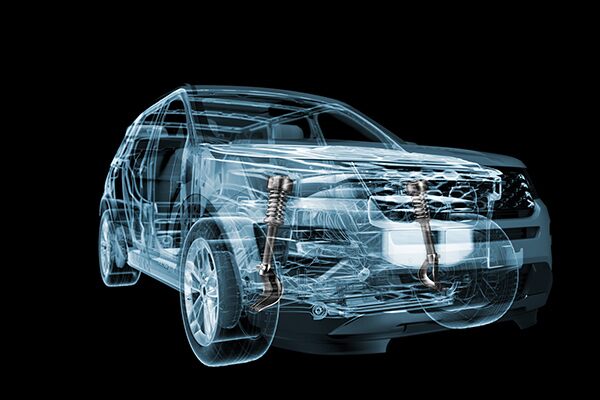This post was originally published on www.geico.com
Driving with worn shocks or struts can result in more than just a bad ride—there are safety implications to consider. “Most drivers don’t realize that driving with bad shocks or struts can actually increase your stopping distances, especially on wet or slippery roads,” says Jill Trotta, Senior Director at RepairPal.
But recognizing when it’s time to replace shocks or struts isn’t always easy. “You get used to the way the car drives because the changes are gradual,” says Richard Reina, Product Training Director at CARiD. “You’re not aware of the wear and tear that’s going on with the suspension over the thousands of miles and years that you own the vehicle.” It’s like that favorite pair of shoes that feel fine until, one day, you discover the soles are worn out.
How Shocks And Struts Work
Shocks and struts help stabilize your vehicle’s movements, enhancing control when you turn, brake, accelerate or encounter uneven road surfaces. Today’s vehicles use shocks, struts or a combination of the two.
The basic difference is that a shock is an independent component, while the strut combines the shock and other features in a single structural unit. Both help to stabilize the vehicle and keep the tires in contact with the pavement. Without shocks, your vehicle would bounce down the road.
How long can you expect your shocks or struts to last? That depends. “Driving on rough or unpaved roads, towing a trailer or carrying heavy loads, can shorten their functional life,” says Reina. “With heavy use, you could be looking to replace them at 40,000 or 50,000 miles or sooner. Under normal conditions, 75,000 to 90,000 miles might be reasonable.”
The Warning Signs Of Worn Shocks And Struts
While many variables determine the life of your shocks or struts (hello, potholes), Reina says experiencing any of these seven symptoms means it’s time for replacements.
- Instability at highway speeds. Your vehicle never feels completely stable on the highway and is constantly moving up and down. The movement may be slight, but you notice it.
- Vehicle “tips” to one side in turns. When taking a sharp turn or an off-ramp, your vehicle leans or “tips” to the outside of the turn and feels wobbly.
- The front end dives more than expected during hard braking. You may not notice this until you have to jump hard on the brakes.
- Rear-end squat during acceleration. You’ll notice the front end of your vehicle rising while the rear “squats” during hard acceleration.
- Tires bouncing excessively. After hitting a bump, you can feel a tire (or tires) reacting or “bouncing” for a time. You may also hear a clunking noise.
- Unusual tire wear. Because the tire isn’t being held firmly to the road, the tread wears in a wavy manner instead of evenly.
- Leaking fluid on the exterior of shocks or struts. This is a sign that the seals have broken and the internal fluids essential to proper function are escaping.
How To Buy Replacement Shocks And Struts
“Make sure you buy quality, brand-name shocks or struts,” recommends Trotta. “And remember that you’ve got choices. Some may be a little stiffer for better cornering, while others may offer better ride comfort. Discuss your preferences with your auto professional before deciding.”
It’s also important to ask about replacing all of the worn parts connected to the struts. “Don’t be penny wise and dollar foolish,” cautions Reina. He recommends replacing other worn items associated with the struts, like bearing mounts, rubber bump stops and shock boots.
Whatever you do, don’t neglect your shocks or struts. Just like with that comfortable pair of shoes, you won’t fully appreciate the difference they make until you get fitted for new ones and hit the pavement.
Another way to get the most enjoyment out of your vehicle is by saving money on car insurance with GEICO. See what you could save with a fast, free quote.
Read More: You may also be hurting your car in these surprising ways.
By Fred Stafford
[ad_1]
